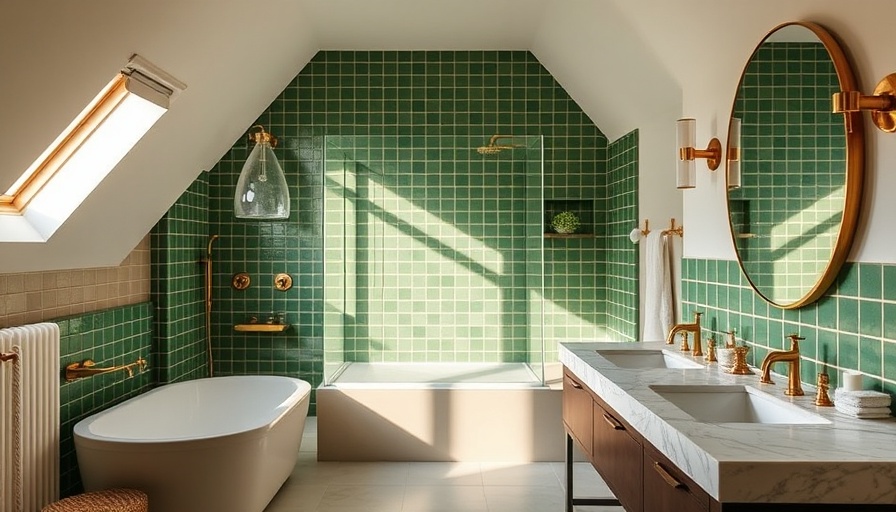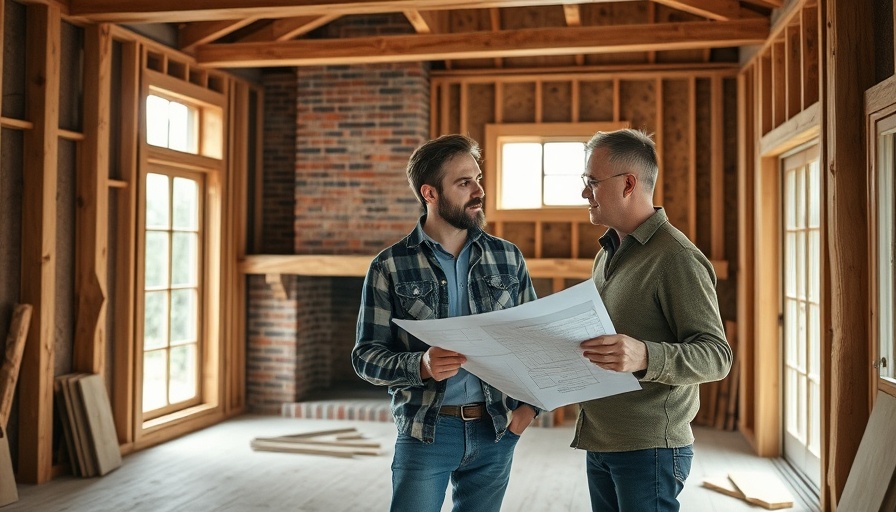
Unlocking the Potential of Attics: Transforming Space into a Spa-Like Retreat
Many homeowners long for extra room but feel constrained by their existing space. This dilemma often leads to the innovative use of attics, turning previously under-utilized areas into stunning bathrooms that offer both functionality and style. A recent project in Victoria, British Columbia, exemplifies this trend, showcasing the exciting possibilities that arise from thinking creatively about home layout.
Turning Dreams into Reality: A Family's Journey
The family at the heart of this transformation faced a common challenge: growing space needs amid a deep love for their neighborhood. As Robbyn McDonald from MAC Reno Design Build describes, the attic was the perfect answer to their problem. "This is a fantastic neighborhood that’s walkable to shops, restaurants, and the beach," McDonald noted, revealing the motivation behind their decision to expand rather than relocate.
This project provided the family with not only a primary suite but also a spacious living room and a chic bathroom, adding value to their home while preserving their community roots.
Designing with Purpose: Midcentury Modern Meets Functionality
The finished bathroom is a stunning homage to midcentury modern design, filled with natural light that enhances its spacious feel. Key features include a double vanity, a generous shower stall, and a freestanding bathtub, creating an inviting oasis for relaxation.
Design elements such as the walnut floating vanity echo the family’s existing décor and preferences, allowing the space to feel cohesive while making efficient use of the area. This deliberate choice showcases a trend highlighted in recent styles—incorporating personalized details that make a home truly unique.
Why Attic Bathrooms Are Gaining Popularity
Attic conversions have surged in interest among homeowners looking for practical solutions to housing shortages or simply to enhance their living spaces. Reference materials reveal that many attic bathrooms traditionally suffer from cramped designs; however, they also offer a blank canvas for creative installations that typical bathrooms cannot accommodate.
While practical features such as curbless showers—which slope to linear drains—improve functionality, aesthetic choices play a major role in the appeal of attic bathrooms. Adding unique elements like sloped ceilings or striking wall colors can transform a formerly neglected space into a showcase of personalized style. According to articles from MyDomaine, techniques such as hanging wallpaper on ceilings or installing striking tile create dramatic designs that can elevate the entire attitude of a bath.
Emerging Trends in Attic Bathroom Design
As seen in the Victoria remodel, minimalist designs combined with practical fixtures are becoming increasingly popular. Attic conversions are often more cost-effective than conventional renovations when done thoughtfully, avoiding major structural changes while maximizing the use of space. This calls for innovative thinking to embrace slanted walls and raised ceilings for an airy feeling.
Additionally, the appeal of natural light continues to dominate design decisions for attic spaces. Installing skylights or strategically placing windows can significantly enhance a previously dark or dreary area, allowing homeowners to bask in sunlight while enjoying their privacy.
Practical Insights for Homeowners Considering an Attic Conversion
For those contemplating a renovation, it’s essential to take a systematic approach. Start by assessing the space’s height to determine what fixtures can comfortably fit without feeling cramped. Using items that are appropriately sized, adding smart storage solutions, and maintaining open lines of sight make a world of difference in how the space feels.
Homeowners should also consider the energy efficiency and sustainability of their renovation choices. Energy-efficient fixtures, such as low-flow toilets and LED lighting, not only reduce utility bills but also promote environmentally friendly living.
Inspiration for Your Own Attic Bathroom Renovation
Whether you want to create your own serene retreat in the attic or maximize your existing home layout, the journey of transforming a previously unused space into a luxurious bathroom can be highly rewarding. Embracing the character of slanted ceilings, intuitive designs, and personal touches can yield a unique sanctuary that enhances both comfort and your home's overall value.
Take inspiration from the renovation trends highlighted here and consider the endless possibilities of what a bathroom in your attic can become. Using creative design, practical fixtures, and leveraging your personal style, you can elevate your home beyond its former potential.
Take Action: Explore Your Attic's Possibilities
Inspired by these transformations? It's time to explore what your attic could become. Consider hiring a design-build firm to help you realize the potential within your walls. With careful planning and thoughtful design choices, your attic could become a functional and beautiful space tailored to your needs. Start dreaming and planning your renovation today!
 Add Row
Add Row  Add
Add 




Write A Comment